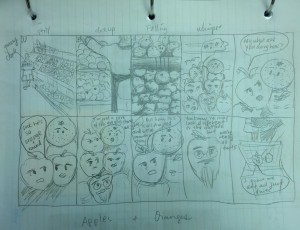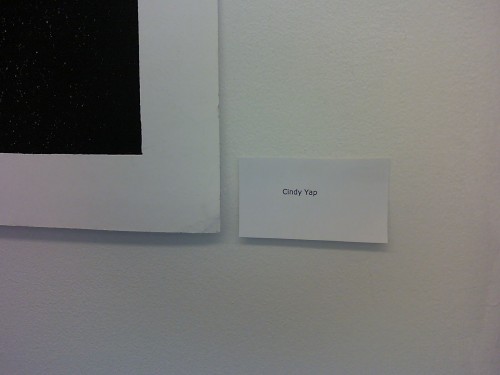Today was a prep day for me so I had the luxury of running around to do the things I needed. The morning began with a visit to the photo lab where I found the projector I needed for tomorrow’s lesson. It was an adventure to get into the photo lab. I had the keys for the photolab and subsequently thought I also had the keys for the outside door into the photolab. Nope, I was wrong. No one except the engineers and principal had access to the school. Silly me. I had braced the cold only to run back and forth to find the photolab inside. It was like a maze but I did find it.
I picked up the projector and brought it back to the art room to test it out. I took out my laptop and realized that it only supports an HDMI cable which was incompatible with what the projector needed. So I told my SA and she said that there was a laptop back in the photolab I could use that does work with the projector. I made my way to the photolab again and brought back the laptop. I hooked it up the projector and it worked! I was excited. I am not tech savvy so hooking it all up on my own was very self-reassuring. I hooked up my USB to the port and played the Powerpoint. Everything was set.
I took the next block to prep for my social justice comic. I decided to do a rough draft of my story on racism. It was going to be called “Apples & Oranges”. The story takes place in a grocery store whereby the grocery clerk brings a box of oranges to refill the orange pile and one of the oranges escapes. This lone orange falls into the apple pile below. A few of the apples give this orange a difficult time but an older wise apple reminds the other apples that he is just a fruit like the rest of us. A story like this is simple but poignant. I wanted to give the students an example of a social justice narrative they could create but without telling them exactly how to do it. This is one fear I have: of using examples. I don’t want them to work towards an example because they think this is what the teacher expects. Instead, I think my comic will be done well, but it will be average, not stupendous. I hope my students can surpass what I create.
After lunch, I went with a fellow teacher candidate to meet with one of the counselors but ended up talking to another one because she wasn’t there. It was fine because we got to speak to two of the school’s counselors who were extremely knowledgeable, experienced, and engaging. I was entertained by their enthusiasm and passion for helping the students.
My last block was spent working in the Special Needs classroom. I wanted to learn more about how to develop lesson plans for them and how I would go about assessing them. Because my inquiry is based on assessment, I am especially concerned with the reliability, validity, and fairness of the assessment. After showing my lesson plans to the Special Needs teachers, they gave me helpful pointers as to how I should assess their work. The emphasis with these students is on the participation, completion, and sense of accomplishment they should feel when doing any assignment. It became more clear and I was given the task of drafting up a checklist of qualities that I would like to see my Special Needs learners accomplish. I worked with one student for the duration of the class and learned how challenging school can be for them. I also learned how patient one needs to be to work with them.
My day wasn’t over yet. At the ring of dismissal bell, I went to the homework club. It is a club that is overseen by one of the school counselors for students who require extra homework help. I ended up socializing more than actually tutoring, but it was all good. I got to chat with some young students who are considering the profession of teaching! They have a few years to go but it’s nice to hear them voice their aspirations. I plan on coming to the homework club once a week and to the Special Needs class once a week. There is also a badminton club which I am interested in volunteering for.


